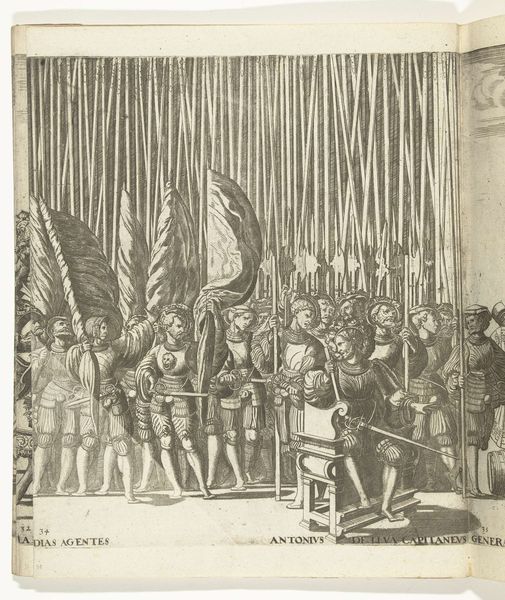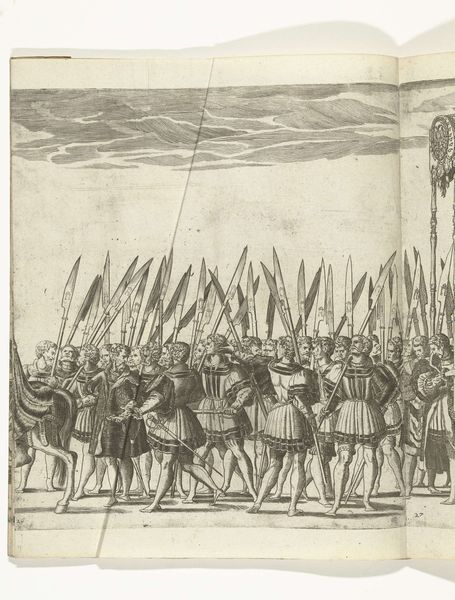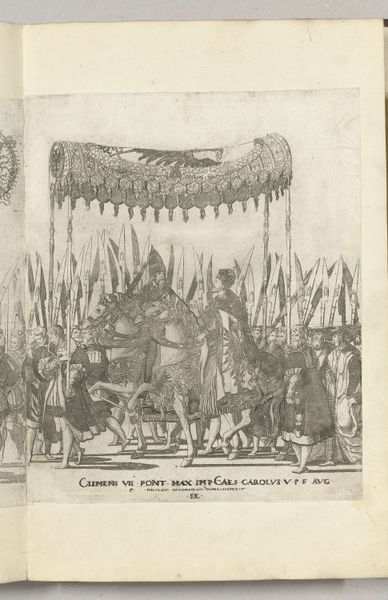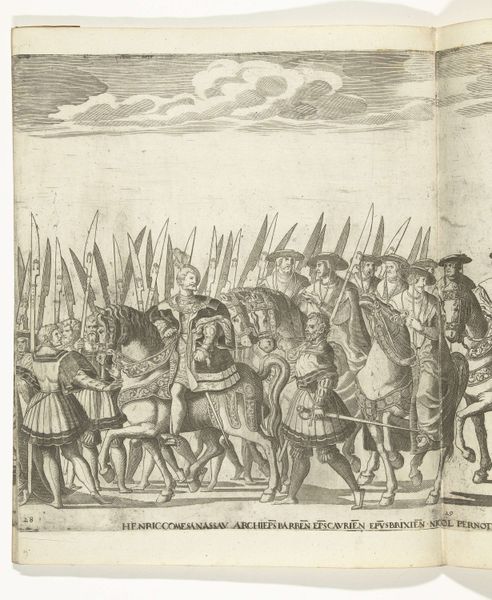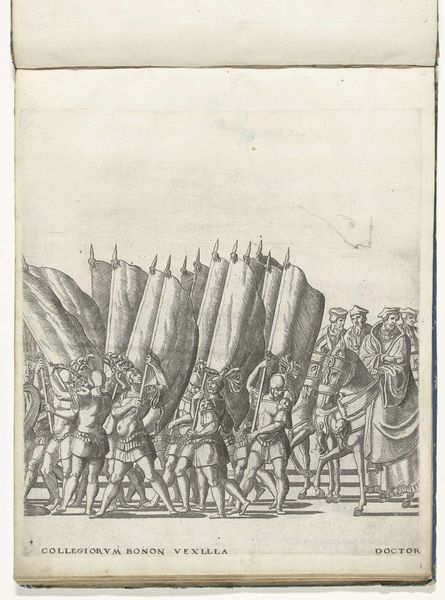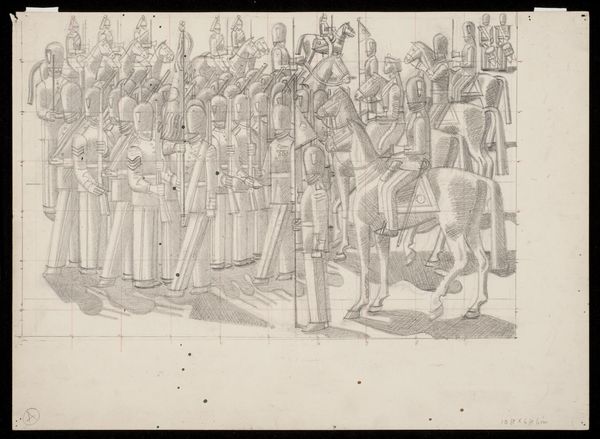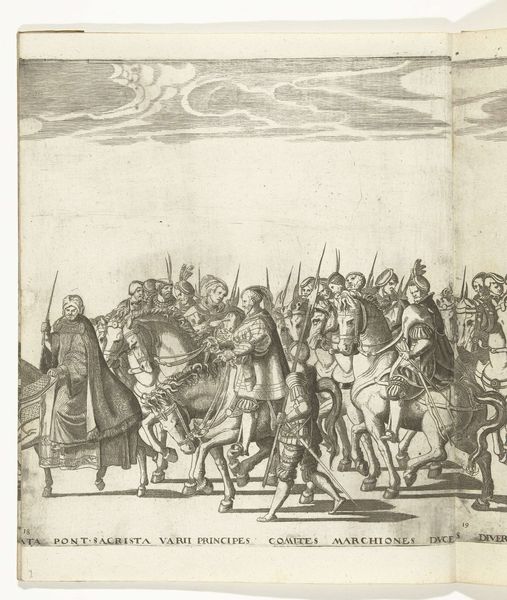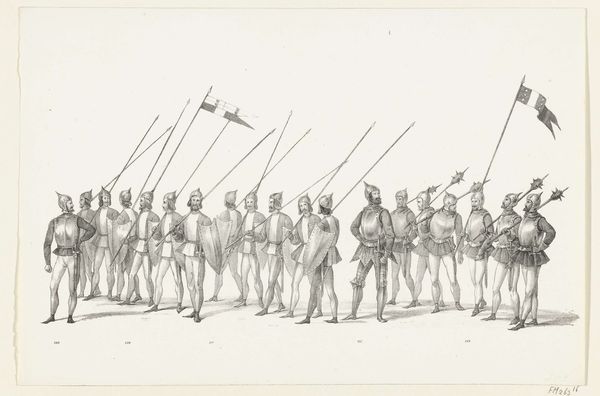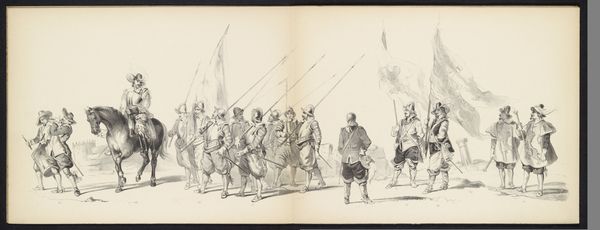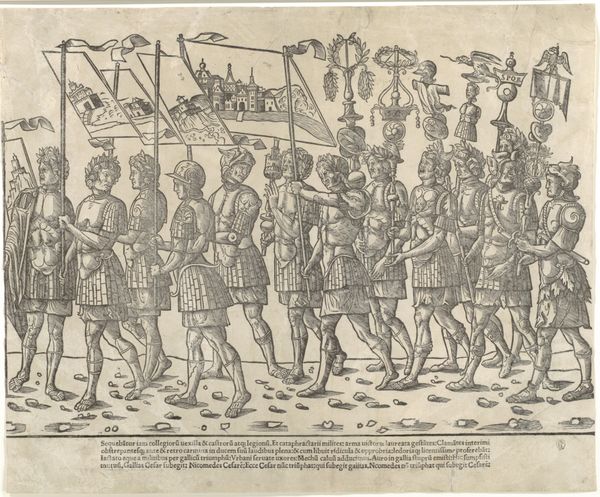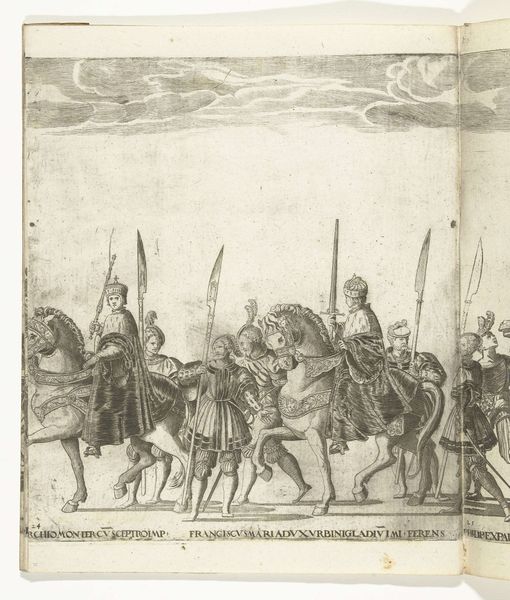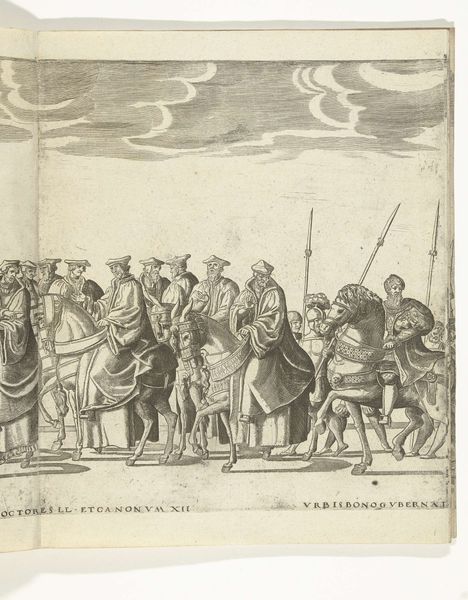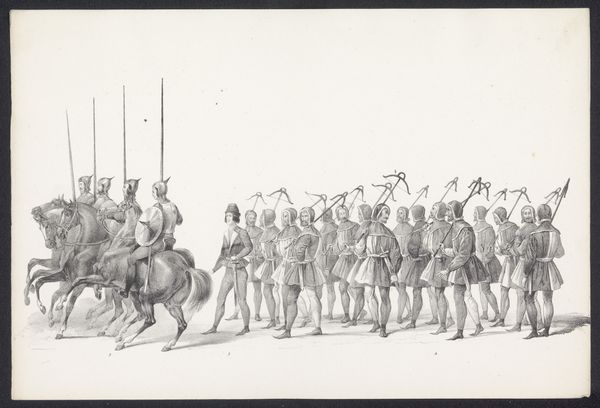![Landsknechten en Antonio de Leyva, plaat [MM] by Nicolaas Hogenberg](/_next/image?url=https%3A%2F%2Fd2w8kbdekdi1gv.cloudfront.net%2FeyJidWNrZXQiOiAiYXJ0ZXJhLWltYWdlcy1idWNrZXQiLCAia2V5IjogImFydHdvcmtzLzViNjM4YTM4LTliYTItNDM2My04YWE5LWU2NzdjYzJmMjJmZC81YjYzOGEzOC05YmEyLTQzNjMtOGFhOS1lNjc3Y2MyZjIyZmRfZnVsbC5qcGciLCAiZWRpdHMiOiB7InJlc2l6ZSI6IHsid2lkdGgiOiAxOTIwLCAiaGVpZ2h0IjogMTkyMCwgImZpdCI6ICJpbnNpZGUifX19&w=3840&q=75)
drawing, print, paper, engraving
#
drawing
# print
#
figuration
#
paper
#
11_renaissance
#
line
#
genre-painting
#
history-painting
#
northern-renaissance
#
engraving
Dimensions: height 360 mm, width 295 mm
Copyright: Rijks Museum: Open Domain
Curator: Look at the bristling array of spears and flags here. This print, an engraving actually, made by Nicolaas Hogenberg between 1530 and 1536, is called “Landsknechten en Antonio de Leyva.” Editor: Impressive. The composition evokes a very ordered, almost militaristic, feel. There's a solemn stiffness despite the implied movement. I suppose that’s the point? Curator: Precisely. Consider the Landsknechten themselves – these were mercenary soldiers, often German, known for their flamboyant dress and fierce reputation in the 16th century. The artist has painstakingly captured their codified attire, replete with slashes and puffs and their imposing arms. The serried spears function, in part, as a halo around these powerful, imposing men. Editor: Yes, I'm drawn to the spears; they act like vertical bars, emphasizing rigidity and control, maybe even threat. And Leyva, is he meant to represent some form of power or command seated away from this band of mercenaries? I wonder about the symbolism embedded in the composition. Who are the individuals empowered here? Curator: Antonio de Leyva was a prominent Spanish general, so placing him on a raised platform communicates authority and perhaps the relative "civility" of command contrasted with the apparent barbarity of mercenaries. What’s truly intriguing is how Hogenberg is leveraging visual language. The line work conveys meticulous attention to detail but the almost oppressive weight of armed power as well. These elements speak to the era’s political landscape and dependence of rulers on bodies like the Landsknechte. Editor: I think your point on that era's political backdrop rings true. Mercenaries existed, and perhaps still do, because their skills and brute strength were resources that were employed in power games in that specific place and time, a visual rendering of those dynamics in action. Curator: Indeed, and by capturing their likeness and documenting their gathering, Hogenberg provides not just a snapshot of a specific moment, but an enduring reflection on war, power, and the role of those who wield them. Editor: It makes you consider those who are absent from this depiction: The exploited, the marginalized, those paying for the brutality displayed with such striking order in Hogenberg's vision of military dominance. Curator: Absolutely, and perhaps the most resonant element, for me, is that while this depicts a specific time and place, its motifs resonate across cultures and historical periods – how we perceive strength, both perceived and brutally deployed, through images. Editor: Very powerful indeed. It definitely gives pause, even today.
Comments
No comments
Be the first to comment and join the conversation on the ultimate creative platform.
